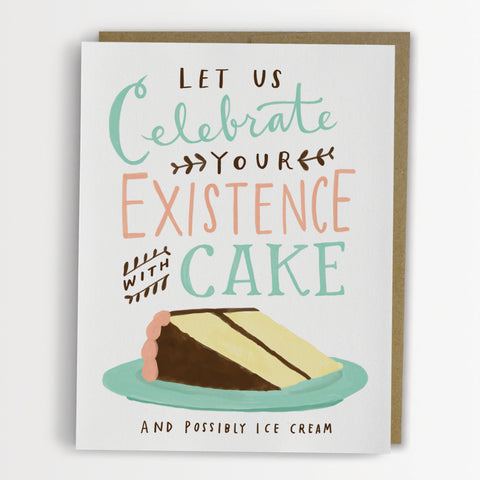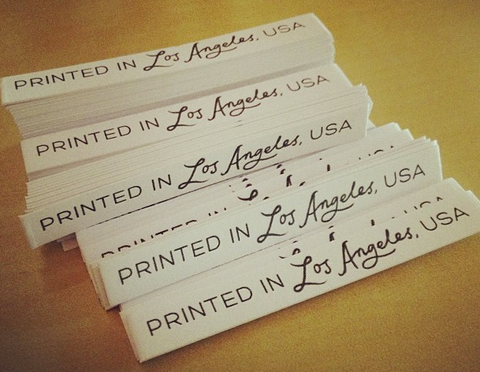The thing I probably get asked the most is some variation on “so… how are you doing this?” The answer is long – waaay too long for one blog post – but I’m going to try and address it as well as I can over a series of posts. I also would like to say up front that part of the answer to this question is “I’m not entirely sure” and “I’m making it up as I go along,” which may either be disappointing or comforting to read. I’m going to start with the part of the question that addresses the nuts and bolts of creating a card line. Not the idea part or the brand development part or the illustration or writing part – those will come later – but the basic who/where/why/what of getting your stuff out there. Hopefully, this information will be able to help those of you who are thinking about creating a card line, but don’t know where to start – which is where I was nine months ago.
How many cards do I need in order to have a “line” for wholesale?
In order to be taken seriously by retailers and sales reps, my experience is that you need to have a minimum of about 40 styles in your line, half of which should be birthday cards. I currently have about 60 styles, and my reps still hear from some store buyers that my line doesn’t have enough choice yet. (I KNOW, RIGHT? So much work.)

OK, half of them should be birthday. What should the rest be?
As a new line, your cards need to be occasion-specific in order to sell at retail. In other words, store buyers will very rarely buy cards from a new line that don’t target a holiday, birthday, sympathy, thank you, etc. Even if they’re super pretty or funny or both.
Should I print on the inside of my cards?
If you want to sell them in boutiques, no. This surprised me, but in the greeting card industry, there is a perception that cards with messages printed on the inside are “mass market” and are only suitable for Hallmark, grocery stores, etc. Higher-end cards (wholesaling for $2 and up) generally will always be blank inside, which means you only have the front of the card to communicate your message.
How should I price my cards?
My experience is that the maximum wholesale price a retailer will pay for an offset printed card is $2.25, with a suggested retail price of $4.50. (I can’t speak to letterpress, because I don’t do that, but obviously the prices are higher.) Retail prices are always a minimum of double the wholesale price, and shops in more expensive markets will mark them up further.
But I sell my cards on Etsy for $3. Is that a problem?
If you start out with an etsy shop where you’re selling directly to customers and your goal is to have your cards in shops, you need to make sure your prices are high enough that you’ll still make money if you sell your cards to wholesale buyers at 50% of their retail price – because that’s what you will have to do. A $3 card sold on Etsy will net you $1.50 wholesale.
How many cards usually go in a wholesale order?
Cards are sold to retailers in multiples of six per style (so a store can’t buy less than six of any one style from you), and you generally will have a minimum wholesale order amount. You can set it to whatever you want, but you want to make sure that it’s high enough to make the orders profitable for you. $100 is a common minimum number.
How do you print your cards?
My cards are offset printed in large runs by Marina Graphics, a printer in Los Angeles. I love them. I’ve found that the hardest part of having a company where you make stuff is finding good manufacturing partners. I reached out to my network in order to get recommendations for good local printers, and then I met with several of them and got estimates. It was important for me to stay local because I like to do press checks in person. You can also save a lot of money on freight if your printer doesn’t have to ship your cards to you.
How does offset printing work? Can you print, like, a couple hundred of one card?
Nope. Offset printing is good for large runs of multiple styles. The card stock you print on comes in giant sheets, and I gang up 18 cards on each sheet when I print. The cards are trimmed after printing. Right now, I’m running a couple thousand sheets at a time. The standard minimum to run an offset press is 500 sheets, which means you’d end up with 500 of each of 18 cards (or 1000 of each of 9 cards if you repeat them on the sheet). If you want to print smaller numbers, digital printing will be a better bet. That’s how I printed my samples for the National Stationery Show.
What should go on the back of my cards?
Your logo and website, and it's also a good idea to assign a style number to each card and print it on the back. Reps will require this, but even if you’re not working with reps, this makes the ordering process much easier for you and your retailers. It’s also a smart move to say what country the cards are printed in. If you get picked up by a national retailer, most of them will require this on your products. I learned this the hard way with Urban Outfitters, where we had to insert tiny tags that said “Printed in Los Angeles, USA” into each of several thousand card bags to get through the old stock before I could reprint the cards with this information added to the back. 
In the next post, I'll cover some basic information about sales reps, the National Stationery Show, and expenses. Hopefully this was helpful!


